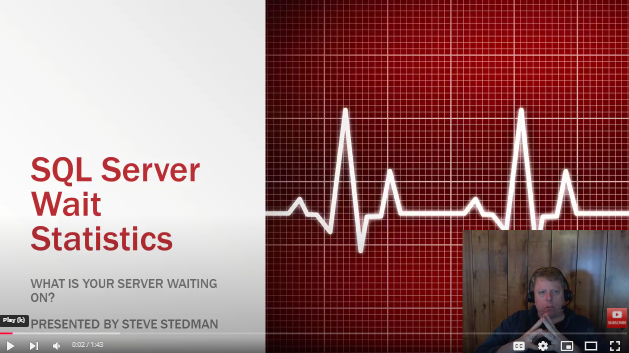Wait statistics, in the context of SQL Server, refer to the amount of time that a query spends waiting to access data in the database. When a client application requests data from the database, the request is placed in a queue and the client application must wait for its turn to access the data. The time that the query spends waiting is called a "wait" and is tracked by SQL Server. This information can be used to identify potential performance bottlenecks and optimize the performance of the database. Wait statistics are commonly used by database administrators to diagnose and troubleshoot performance issues in SQL Server.
In Microsoft SQL Server, a wait type is a type of event that occurs when a task has to wait for a resource or for an event to complete before it can continue processing. One of the wait types that can occur in SQL Server is BROKER_ENDPOINT_STATE_MUTEX.
The BROKER_ENDPOINT_STATE_MUTEX wait type occurs when a task is waiting to acquire a lock on an endpoint in the SQL Server Service Broker. The Service Broker is a feature in SQL Server that allows you to send and receive asynchronous messages between databases, servers, or applications. An endpoint is a logical connection point in the Service Broker that allows you to send and receive messages.
The BROKER_ENDPOINT_STATE_MUTEX wait type can occur for various reasons, such as when there are multiple tasks trying to access the same endpoint simultaneously, or when there is an issue with the endpoint itself. It can also occur if the database is heavily accessed and there are not enough resources available to complete the tasks in a timely manner.
It is important to monitor for the BROKER_ENDPOINT_STATE_MUTEX wait type, as it can indicate that there may be issues with the performance of the database or with the Service Broker endpoint. If this wait type occurs frequently or for a long duration, it can potentially impact the performance and availability of the database.
To resolve issues with the BROKER_ENDPOINT_STATE_MUTEX wait type, you may need to troubleshoot the cause of the issue and take appropriate action, such as optimizing the Service Broker configuration or increasing the available resources. It is also important to ensure that the Service Broker endpoints are properly configured and that all tasks being performed by the Service Broker are functioning correctly. By monitoring for and addressing issues with the BROKER_ENDPOINT_STATE_MUTEX wait type, you can ensure that your database is performing optimally and that your messaging system is functioning properly.

Find out more about our SQL Server Managed Services
Applies to
Related Waits
BROKER_CONNECTION_RECEIVE_TASKBROKER_DISPATCHER
BROKER_EVENTHANDLER
BROKER_FORWARDER
BROKER_INIT
BROKER_MASTERSTART
BROKER_RECEIVE_WAITFOR
BROKER_REGISTERALLENDPOINTS
BROKER_SERVICE
BROKER_SHUTDOWN
BROKER_TASK_SHUTDOWN
BROKER_TASK_STOP
BROKER_TASK_SUBMIT
BROKER_TRANSMISSION_OBJECT
BROKER_TRANSMISSION_TABLE
BROKER_TRANSMISSION_WORK
BROKER_TRANSMITTER
See Also
All Wait Types


